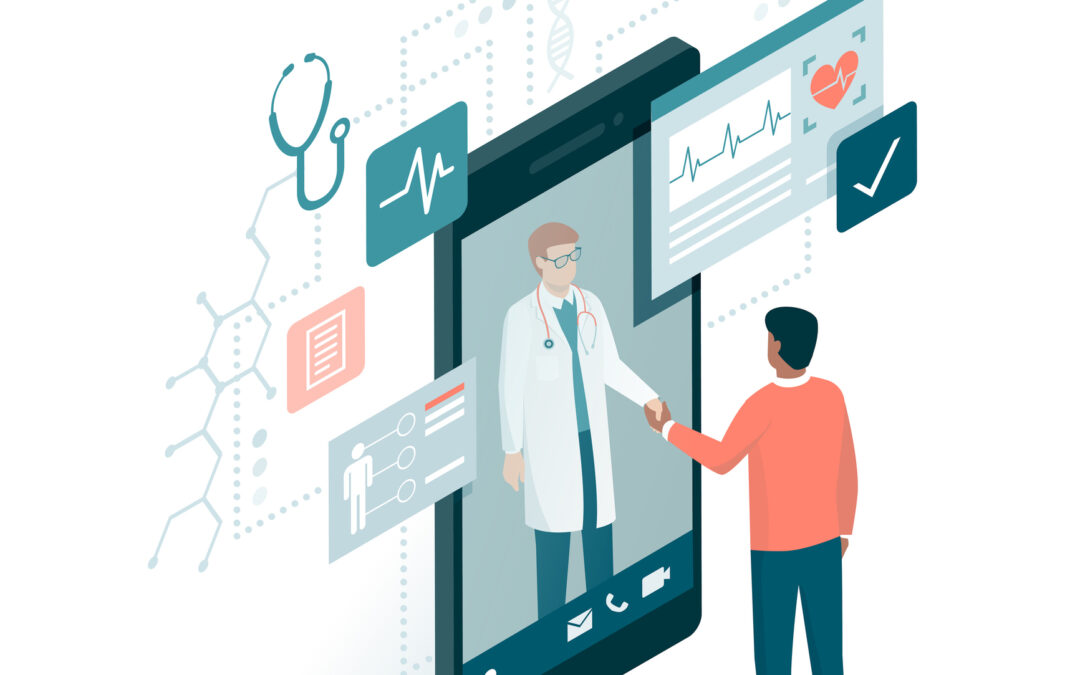Let’s be real: In 2025, the biggest risk to your brand isn’t your latest campaign falling flat — it’s your website quietly failing millions of Americans. And you may not even know it’s happening.
That’s the hidden cost of inaccessible digital experiences. One in four adults in the U.S. lives with a disability, according to the CDC. That’s 67 million people — and your website, patient portal, or digital ad may be unknowingly excluding them.
Still think ADA compliance is the IT team’s job?
Today, accessibility is no longer a legal afterthought. It’s the new front door to your healthcare brand — and it’s time marketing leaders took the keys.
Welcome to the era where accessibility equals strategy, not just compliance.
If AI feels like both your biggest accelerator and your biggest unknown, you’re not alone.
Healthcare CMOs today are under enormous pressure: to personalize at scale, prove ROI faster, and build trust in an increasingly skeptical consumer landscape. And right now, AI is being sold as the solution to all of it — often by people who couldn’t explain what a neural network is if their CRM depended on it.
Let’s get real: Not every AI tool will drive growth. Not every automation will improve outcomes. And not every vendor pitch is worth your team’s time.
But when applied strategically, AI has the power to fast-track transformation. The challenge is knowing the difference between a fast track and a rabbit hole — before your budget, your bandwidth, and your brand get buried in the wrong bet.
So let’s unpack how to tell the difference.
First, Know What “Fast Track” Actually Looks Like
The best AI investments for healthcare marketers share three things in common:
- They solve real problems your team already has
If your pain point is segmentation, AI should help you do it better, faster, and more precisely — not add complexity. - They integrate with your current martech stack
Great AI doesn’t require tearing everything down. It layers in strategically and accelerates what’s working. - They create capacity for human creativity
The right tools free your team to focus on brand, story, and connection — the things AI can’t (and shouldn’t) do.
At ab+a, we see success with AI as part of the GiG model: it should fuel Growth, amplify your Impact, and do Good by improving experiences across the care continuum. If it’s not helping you achieve all three, it’s not strategic — it’s noise.
How to Spot an AI Rabbit Hole
You’ll know you’re looking at an AI rabbit hole when:
- You can’t explain the value without using the word “AI.”
If the pitch only works because of the tech buzzword, it’s not grounded in business outcomes. - It solves a problem you don’t actually have.
Beware the shiny dashboard that creates more dashboards. - It promises personalization without data clarity.
No AI can personalize without clean, structured, consent-driven data. If it skips that part, run. - It has no measurable outcome tied to KPIs.
“Innovation” for the sake of it isn’t innovation — it’s distraction.
CMOs today can’t afford tech distractions disguised as innovation. As one health plan exec recently told us:
“Every AI pitch sounds revolutionary, but what I need is relevance. If it doesn’t help me engage members better, what’s the point?”
Five Fast Track AI Plays for CMOs — That Work
Here are five high-impact ways we see AI delivering measurable value in healthcare marketing today:
- Predictive Member Segmentation
Use machine learning to uncover patient or member behavior patterns you can’t see through traditional demographics.
Why it works:
Predictive models can help you micro-target high-risk members for intervention — or identify those most likely to respond to wellness programs, reducing churn.
GiG Lens: Grow member value by getting ahead of their needs.
- Dynamic Content Generation at Scale
AI-driven content engines can create templated, compliant copy variations personalized by segment — freeing up your team to focus on strategic narratives.
Why it works:
It reduces production time and improves relevance in omnichannel campaigns (think: emails, microsites, landing pages).
GiG Lens: Impact engagement across lifecycle touchpoints.
- Conversational AI for Contact Centers
Deploy AI-powered virtual agents to manage tier-one inquiries, freeing human agents to handle complex or emotional issues.
Why it works:
Faster resolutions, higher satisfaction scores, and better alignment with patient expectations for 24/7 access.
GiG Lens: Do good by improving the real patient experience, not just the perception.
- Real-Time Sentiment Analysis on Social + Feedback
Natural language processing tools can mine social and survey data to identify emergent concerns — before they become PR problems.
Why it works:
You can proactively course-correct, respond with empathy, and maintain brand trust in high-scrutiny moments.
GiG Lens: Protect the brand while deepening emotional relevance.
- AI-Augmented Accessibility Tools
From automatic video captioning to real-time readability scoring, AI can help ensure all content meets accessibility standards.
Why it works:
It’s faster, more scalable, and builds inclusion into every touchpoint — crucial for diverse, aging, and multilingual audiences.
GiG Lens: Good isn’t a value. It’s a design principle.
Important Questions to Ask Before You Invest in AI
Before greenlighting your next AI initiative, ask these five questions:
- What’s the core business problem this solves?
Tie it directly to patient/member acquisition, retention, cost savings, or satisfaction. - How will we measure success?
Define KPIs in advance — whether it’s a 15% increase in member engagement or a 25% reduction in call volume. - What existing workflows or tools does this complement?
Avoid tech that replaces processes that weren’t broken in the first place. - How do we train it — and who maintains it?
AI isn’t “set it and forget it.” If no one on your team owns it, it won’t succeed. - How does it align with our brand promise and mission?
The best AI tools don’t just work — they fit.
Where CMOs Can Lead — Not Just Follow
Here’s the real opportunity: Healthcare CMOs are uniquely positioned to lead the AI conversation inside their organizations — not just react to it.
Why? Because marketing owns:
- The brand promise
- The patient/member experience
- The data signals
- The empathy lens
And those are the very things AI needs to be effective.
What we’ve seen with our clients is this: when marketing leads AI strategy with clarity, the results are faster, cleaner, and more sustainable. When it’s relegated to the IT team or innovation group, it often gets overbuilt and underused.
You don’t need to be a data scientist to lead. You just need to ask better questions — and align every AI decision to your highest business goals.
Final Thought: Use AI to Amplify, Not Replace
AI isn’t here to replace marketers. It’s here to replace wasted marketing — the kind that’s too slow, too generic, or too disconnected from the people it’s trying to reach.
So don’t fall for the rabbit holes. Don’t chase the shiny tools that promise magic but deliver complexity. Use AI to amplify what your brand already does best: connect, clarify, and care.
And if you’re wondering where to start? Start with one problem. One use case. One fast track.
At ab+a, we’re helping healthcare brands do just that — with AI-infused strategies grounded in the GiG model:
Grow what matters.
Make an Impact that sticks.
And do Good at every touchpoint.
Because in this new age of automation, your brand’s humanity is still your most powerful technology.
We would love to discuss your particular challenge with AI.







